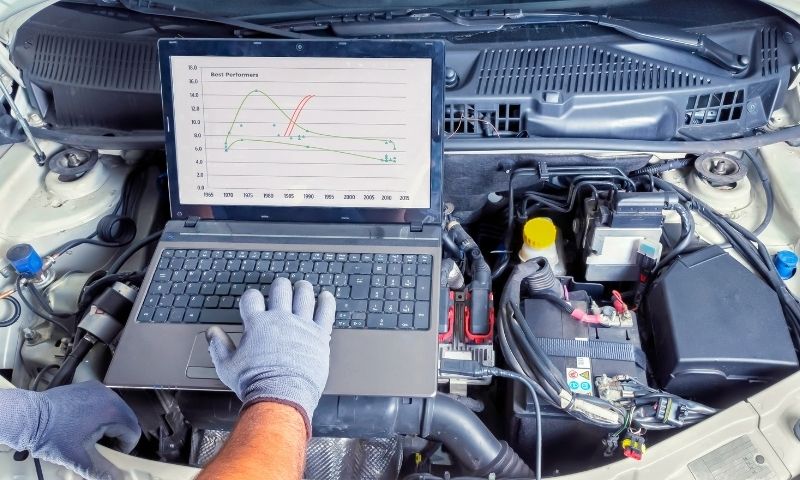A Leading Resource Built By Automotive Lovers, For Automotive Lovers.
We’ve helped consumers around the world make their purchasing decisions.
Latest Articles
To choose the right solar charger for a boat, consider its size. Small boats (up to 20ft) need 300-600Wh daily with a 250-500W generator. Medium boats (21-35ft) require 600-1200Wh and… A gel cell battery charger uses a CC/CV charging algorithm. It starts with the Bulk Stage, supplying a constant current until reaching 80% charge capacity. The optimal voltage is 13.8… A fully charged car battery reads about 12.6 volts when the engine is off, known as resting voltage. When the engine runs, the voltage typically rises to 13.5 to 14.5… A battery charger shows the current on an amp meter. At first, it may read its maximum output, like 10 amps. As the battery charges, this number drops significantly, often… A float charger works on an automotive battery by delivering a steady voltage of 2.25 volts per cell, or 13.5 volts for a 12V battery. It operates in float mode,… The alternator keeps the car battery charged. As the engine runs, the alternator generates electricity to recharge the battery. It also powers the vehicle’s electronics, like lights and radio. The… Absorption mode is a charging phase in a battery charger. During this phase, the battery reaches about 80% of its capacity. The charger reduces the current input to prevent overheating…. To preserve cell phone battery life, adjust your settings. Reduce screen brightness and set a shorter screen timeout. Activate adaptive battery to limit background activity. Turn off keyboard sounds and… Many Android phones, like the Moto Z Droid, need battery care. Some have removable batteries, while others do not. To maintain battery life, adjust power settings and close unused apps…. Many Android phones, like the TCL ION X, have non-removable batteries that need charging. Non-removable batteries are now typical. If your phone shuts down often or apps run slowly even… A smart battery charger optimizes the charging process for various battery types using automated steps. It typically employs 8 to 9 charging stages, which enhance battery performance. These chargers include… Wi-Fi usually consumes less battery than cellular reception. In stand-by mode, Wi-Fi is more energy efficient. However, high data demands on 4G+ can increase battery usage. For better user experience… A core charge fee for a battery is a deposit that encourages the return of an old battery. Manufacturers or suppliers determine this fee based on the value of materials… Wi-Fi usually uses less battery than cellular data. When Wi-Fi is connected, it is more power-efficient. However, if Wi-Fi is not used, it can drain battery life. To improve battery… Battery is a criminal charge. It involves intentional physical contact that harms or offends another person without their consent. This charge differs from assault, which focuses on threats of harm…. The STD setting on a battery charger means “standard battery.” This setting is safe for charging AGM (Absorbent Glass Mat) batteries. It allows a faster bulk charge rate at the… Water is essential for lead-acid batteries. Keep the electrolyte level 1/8 inch above the plates. Sealed batteries, like lithium, have electrolytes but don’t need water. Water evaporation occurs over time,… TSheets does not significantly drain your cell phone’s battery. Its battery usage is similar to that of most social media apps, making it efficient for users. Data consumption is low,… The number of cells in a laptop battery matters when comparing batteries with similar features. More cells usually enhance runtime but increase battery weight. Key measurements include milliamp hours (mAh)… Preconditioning a battery for fast charging means adjusting its temperature for optimal performance. In cold or hot weather, preconditioning warms or cools the battery. This improves charging efficiency and speeds… {Desul means desulfation on a battery charger. This process restores a battery affected by sulfation. The charger uses high-voltage pulses to break down hardened lead sulfate crystals. When you see… Mac laptops use lithium-ion technology for their batteries. These batteries offer fast charging speed and long lifespan. Lithium-ion cells represent the most advanced battery types for portable devices. This technology… Being charged with battery means facing an accusation of a criminal offense. This involves unlawful physical contact with another person. Battery differs from assault, which is instilling fear of such… Battery reconditioning means restoring a battery’s power capacity. A battery charger achieves this by fully discharging the battery and then fully recharging it. This process recalibrates the battery and improves… The Asus A41-X550A six-cell battery lasts longer than the original. It has a capacity of 2900mAh, providing 1.5 to 2.0 hours of runtime. With good care, it can last up… The iPhone uses a lithium-ion battery. This rechargeable technology offers high efficiency and power density. It ensures fast charging and long battery life. Lithium-ion batteries are lightweight and durable compared… Battery reconditioning means restoring a battery’s capacity and accuracy using a battery charger. The process includes fully discharging and then fully charging the battery. This recalibration improves the battery’s capacity… Battery reconditioning, shown as “battery recond” on a charger, restores a battery’s capacity. This process includes a full discharge followed by a full recharge. Regular maintenance of this type improves… Tesla manufactures its own battery cells at its Fremont factory and Gigafactory in Nevada. The company works closely with Panasonic to produce high-capacity lithium-ion cells. This collaboration strengthens Tesla’s manufacturing… Yes, syncing on a cell phone can drain the battery. Auto-sync uses power, especially with multiple accounts. Background apps increase processor load and reduce battery performance. To save battery, enable…What Size Solar Charger for Boat Battery? Complete Guide to Wattage and Installation
How a Gel Cell Battery Charger Works with Solar Power: Everything You Need to Know
What Should a Fully Charged Battery Read? Ideal 12V Voltage Levels Explained
What Should a Battery Charger Read When Fully Charged? Check the Charge Gauge and Meter
How a Float Charger Works on a Cell Automotive Battery: Benefits and Best Practices Explained
What Keeps the Battery Charged in a Car? A Step-by-Step Guide to the Charging System
Absorption Mode on a Battery Charger: Its Role, Importance, and Charging Stages
Maximize Smartphone Performance: Tips to Have TK Preserve Cell Battery Life
“Do Droid Cells Need a Battery? Signs of Battery Failure and Replacement Tips”
Droid Cells: Signs You Need to Replace Your Battery and Extend Its Life
What is a Smart Battery Charger? Benefits, Stages, and Key Differences Explained
WiFi vs Cellular Data: Does WiFi Use Less Battery for Mobile Devices?
Core Charge Fee for a Battery: Purpose, Refund Process, and How to Avoid It
WiFi vs. Cell Data: Which Drains Battery Life Faster? A Detailed Comparison
What Does the Charge Battery Mean? Definitions, Examples, and Legal Implications
What Does STD Mean on a Battery Charger? Explore Battery Types and Charging Methods
Water and Battery Care: Does Water Go Through Battery Cells? Safety Tips and Maintenance
Does TSheets Drain Your Cell Battery? App Performance, GPS Impact, and User Tips
Does the Number of Cells in a Laptop Battery Matter for Performance and Life?
What Does Preconditioning Battery for Fast Charging Mean? Benefits and Process Explained
Desul on a Battery Charger: Understanding the Desulfation Process and Its Effectiveness
Does the Mac Have an Ion Cell Battery? Performance, Maintenance, and More Insights
What Does Being Charged with Battery Mean? Overview, Examples, and Legal Implications
Battery Reconditioning on a Charger: What It Means for Your Car Battery
Asus A41-X550A Battery: Does the 6 Cells Replacement Last Longer? Insights & Reviews
iPhone Battery Technology: Does It Use Ion or Metal Cell Batteries?
Battery Reconditioning: What Does It Mean on a Charger and Its Effectiveness?
What Does Battery Recond Mean on a Battery Charger? Benefits for Car Batteries Explained
Does Tesla Produce Their Own Battery Cells? Insights on Battery Production and Technology
Does Sync on Your Cell Run Down Battery? Impact of Auto Sync on Smartphone Performance



